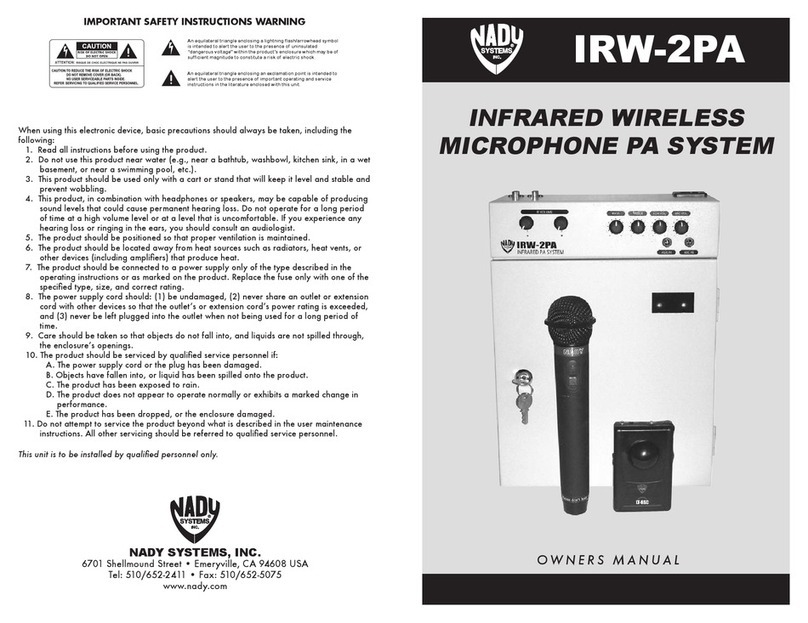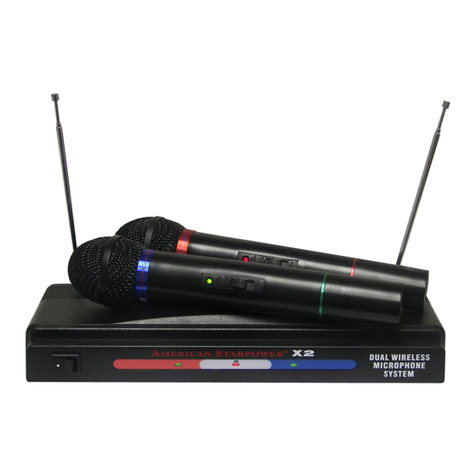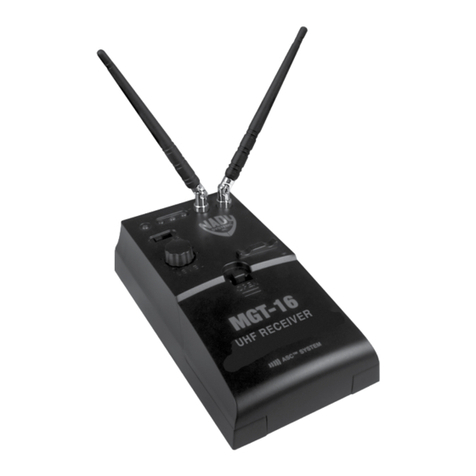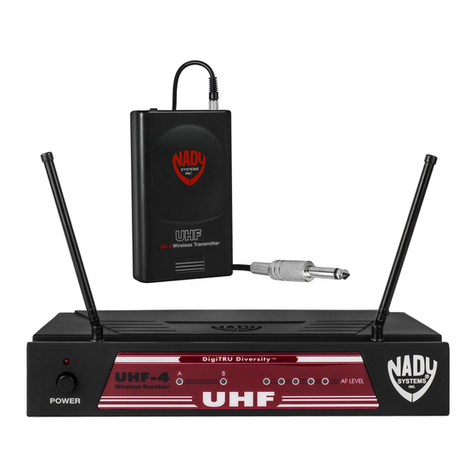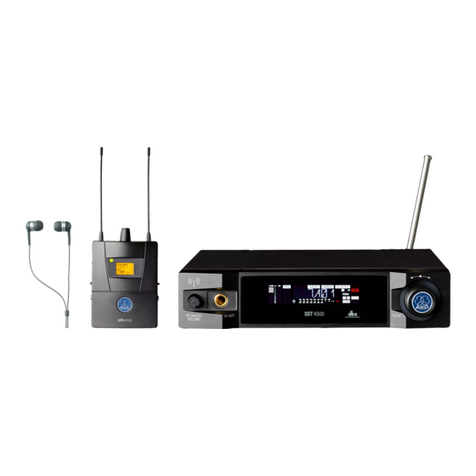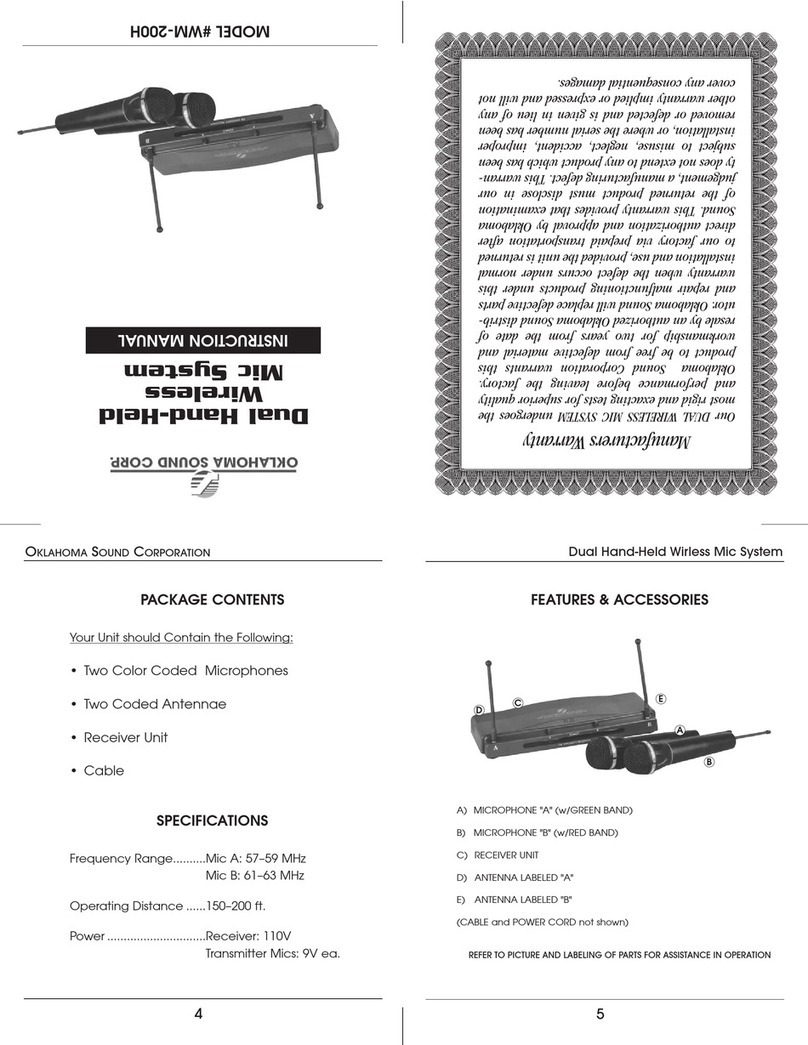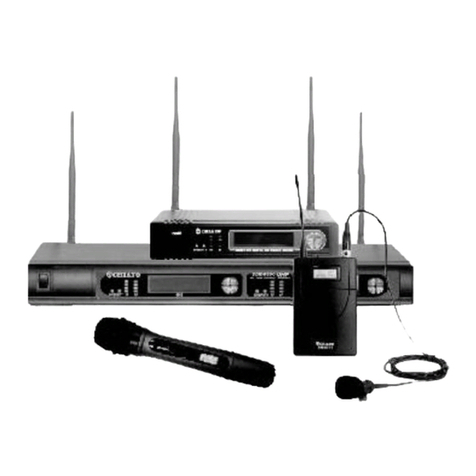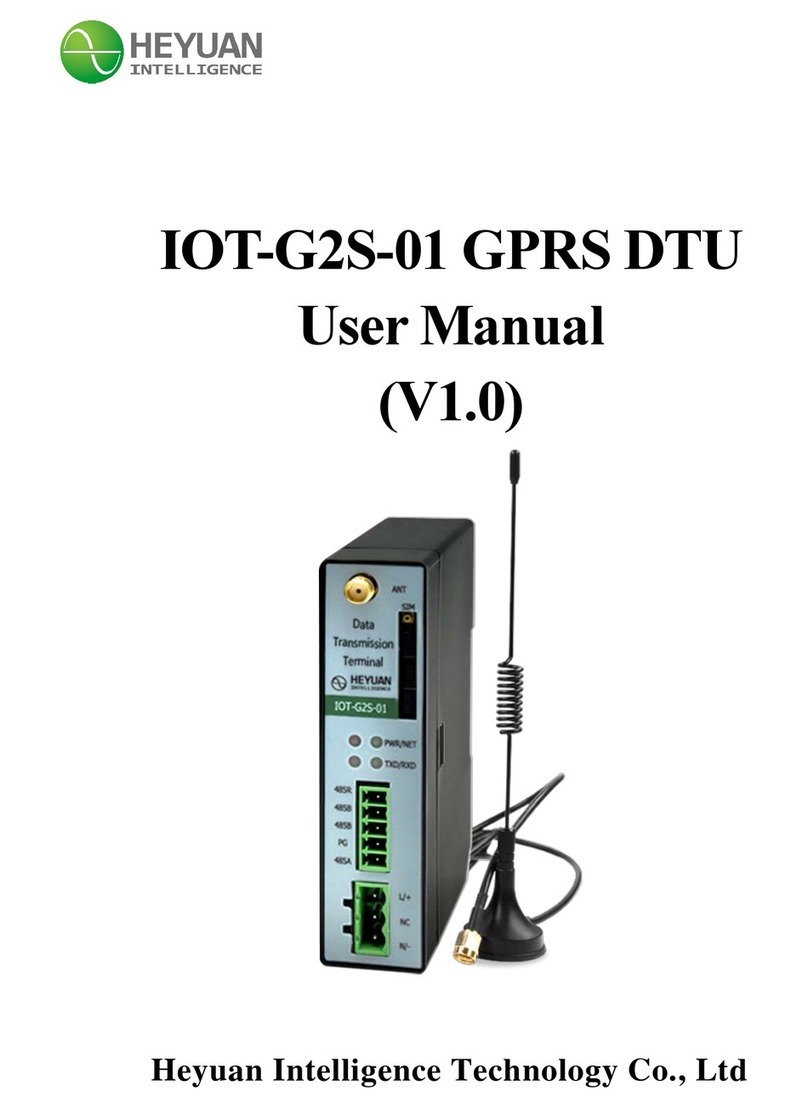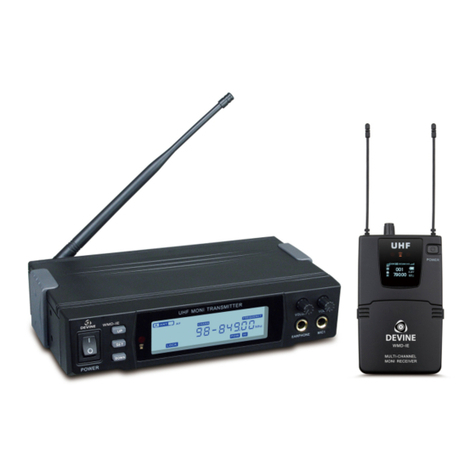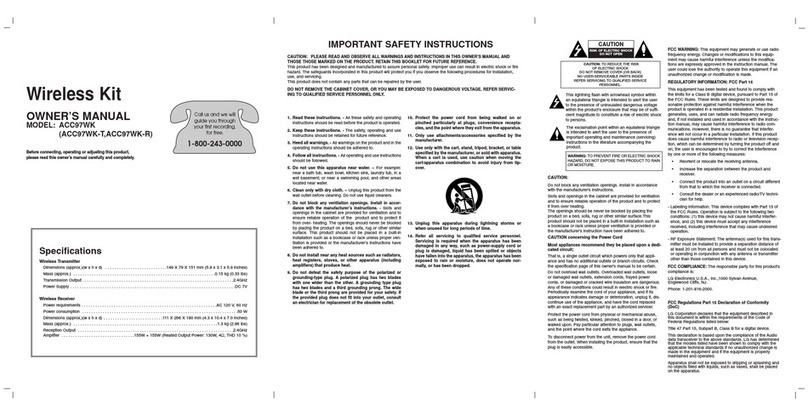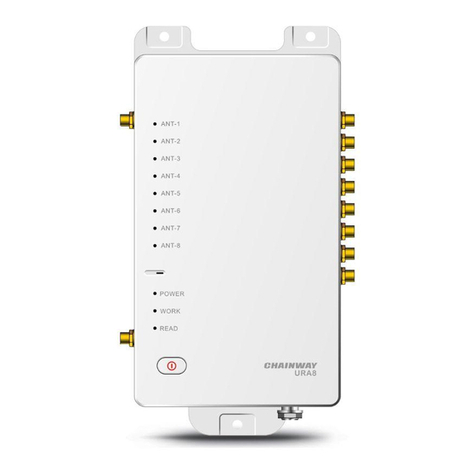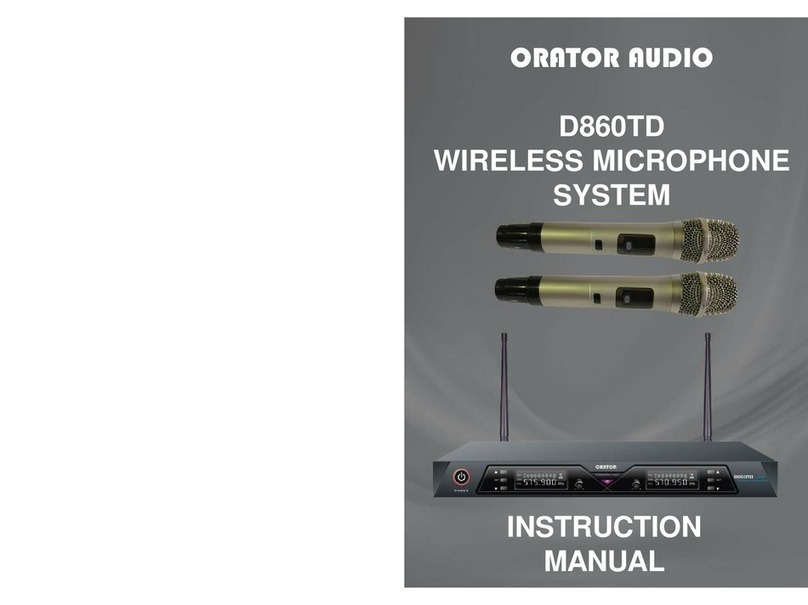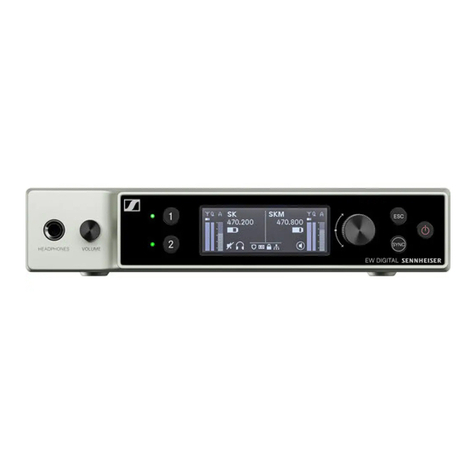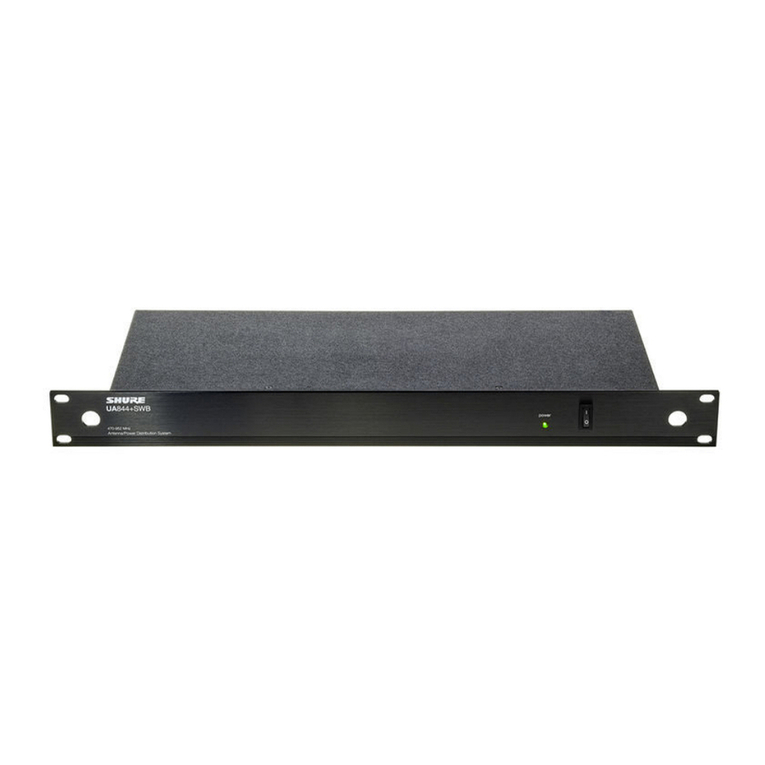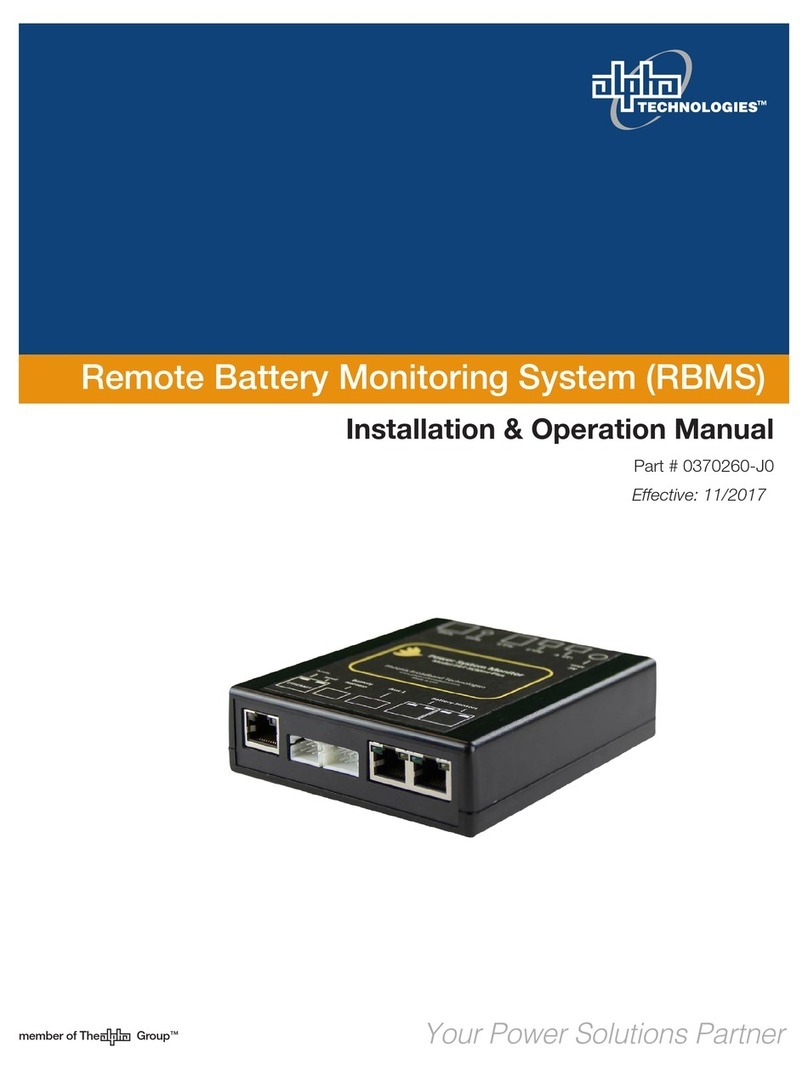Nady Systems 9E3W1KUH User manual
Other Nady Systems Microphone System manuals
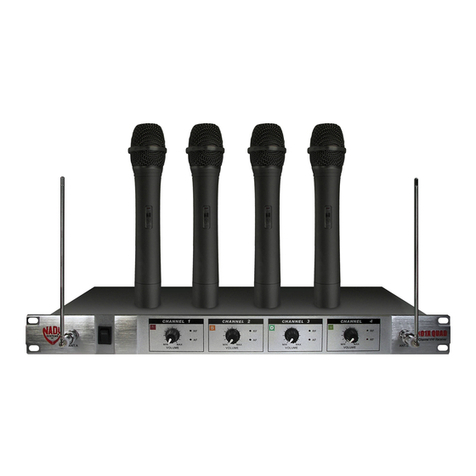
Nady Systems
Nady Systems 401X Quad User manual
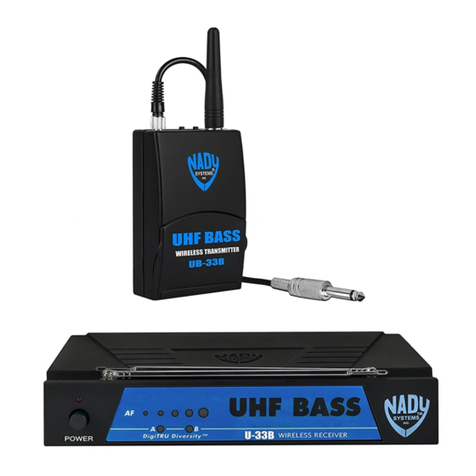
Nady Systems
Nady Systems DigiTRU Diversity UB-33B User manual

Nady Systems
Nady Systems ENCORE DUET User manual
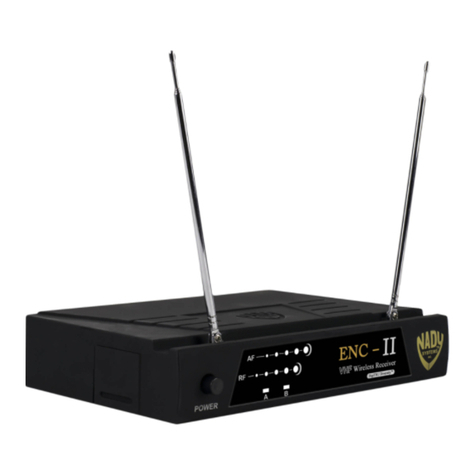
Nady Systems
Nady Systems ENCORE II User manual

Nady Systems
Nady Systems UWS-100 User manual
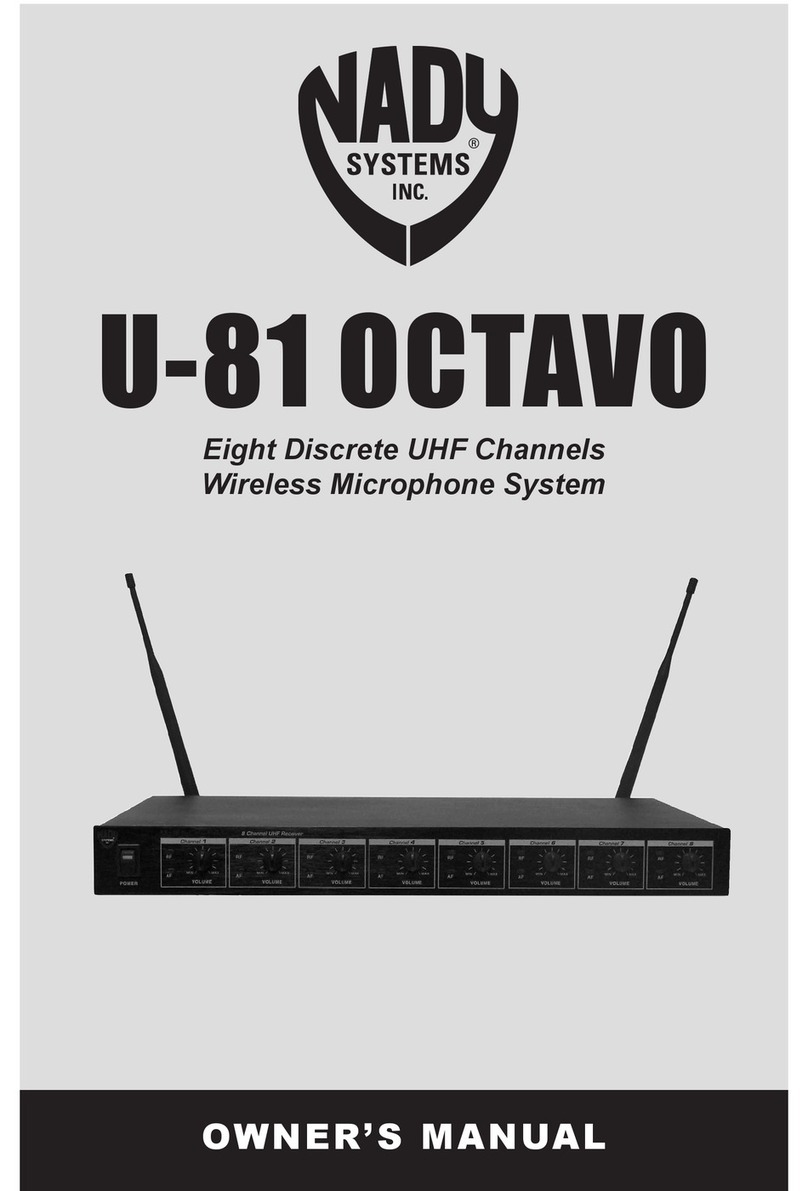
Nady Systems
Nady Systems OCTAVO U-81 User manual
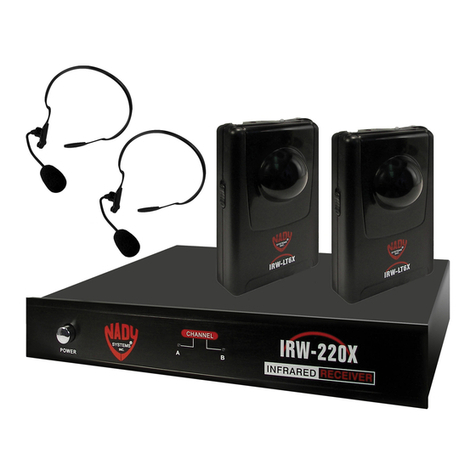
Nady Systems
Nady Systems IRW-220X HT/LT/O - Nady Ir Wireless System User manual
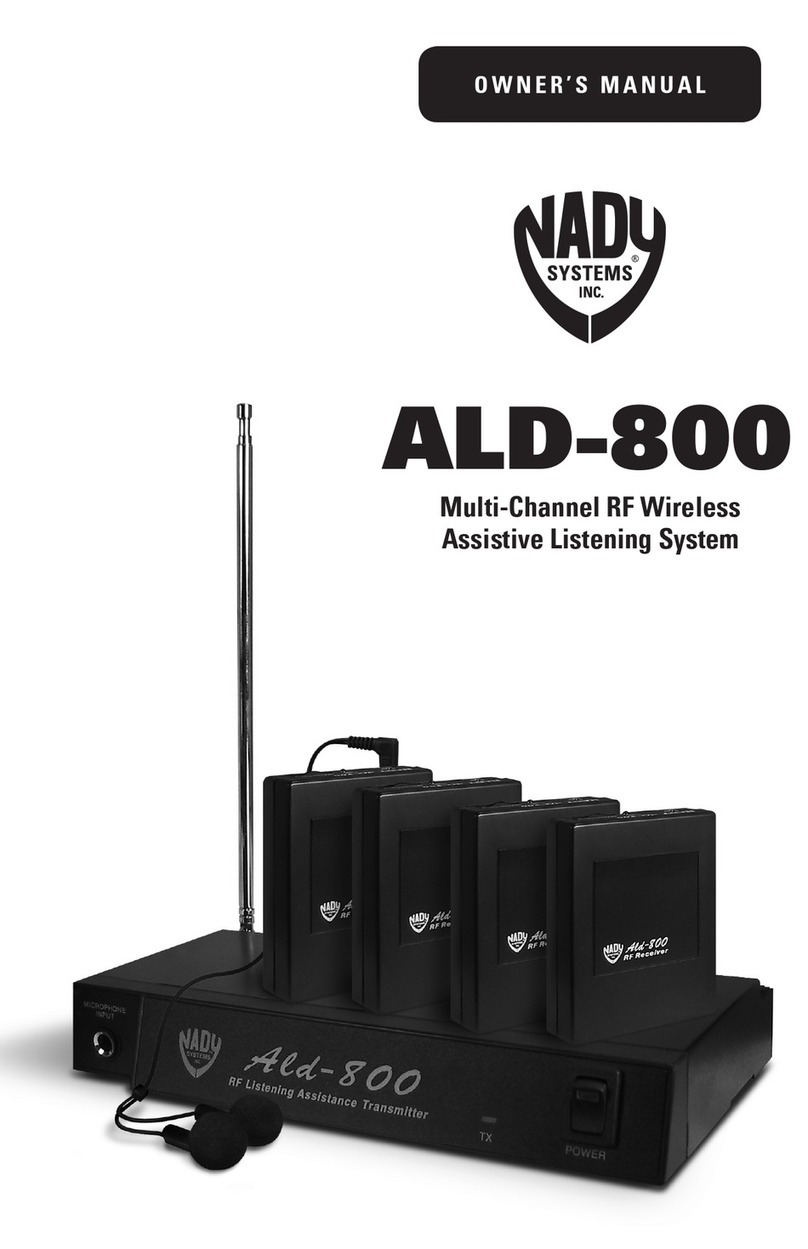
Nady Systems
Nady Systems ALD-800 User manual

Nady Systems
Nady Systems ENCORE 200 User manual
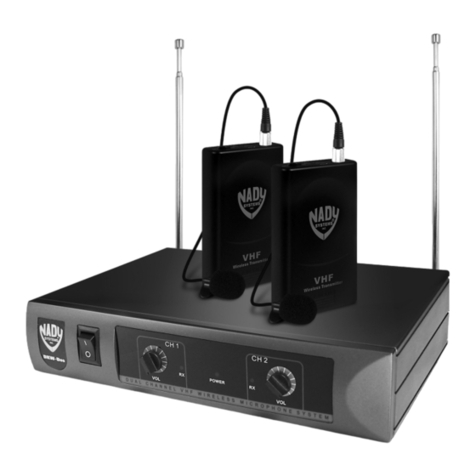
Nady Systems
Nady Systems DKW-duo User manual

Nady Systems
Nady Systems UHF-16 User manual
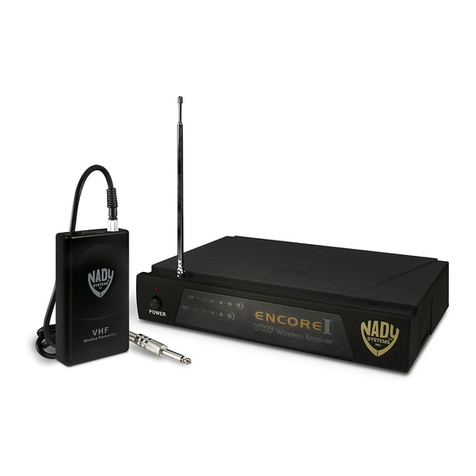
Nady Systems
Nady Systems Encore I User manual

Nady Systems
Nady Systems DKW-8U User manual

Nady Systems
Nady Systems U-41 QUAD User manual

Nady Systems
Nady Systems WS-16U User manual

Nady Systems
Nady Systems ENCORE DUET User manual
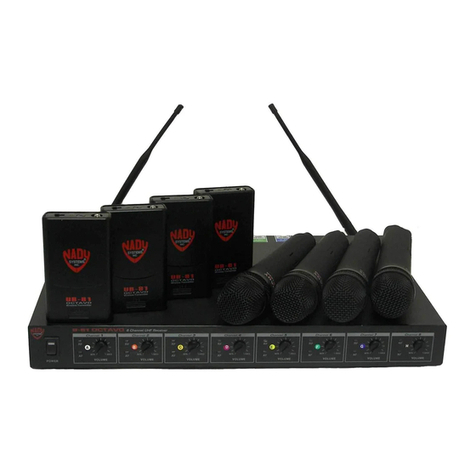
Nady Systems
Nady Systems OCTAVO U-81 User manual

Nady Systems
Nady Systems MRX-16 User manual
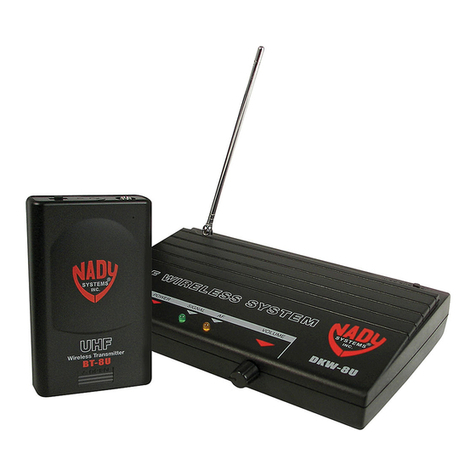
Nady Systems
Nady Systems DKW-8U User manual
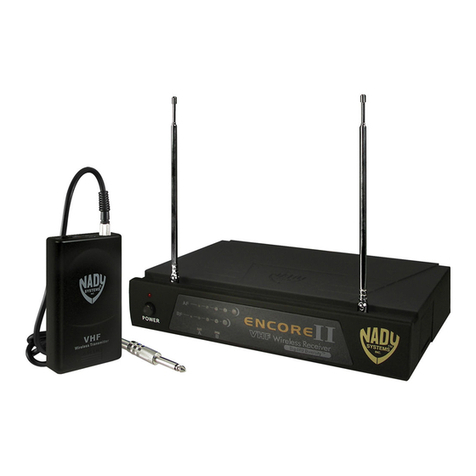
Nady Systems
Nady Systems ENCORE 2 User manual
